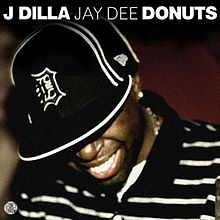 Until a certain point in my life, I thought music was simply what it seemed to be on the surface: a bunch of sounds that fit well together and made me want to sing along. Aside from the ballet classes I took four days a week, music without words seemed lacking. In ballet class, the piano player’s hands guided our movements, and to me, those sounds just made for a more pleasant method of counting. If I couldn’t memorize and sing along with lyrics, what purpose did music serve?
Until a certain point in my life, I thought music was simply what it seemed to be on the surface: a bunch of sounds that fit well together and made me want to sing along. Aside from the ballet classes I took four days a week, music without words seemed lacking. In ballet class, the piano player’s hands guided our movements, and to me, those sounds just made for a more pleasant method of counting. If I couldn’t memorize and sing along with lyrics, what purpose did music serve?
Until, that is, in 2006, when I was a senior in high school; a male friend of mine casually passed along an album of instrumentals titled “Donuts†by hip-hop producer J Dilla. I remember almost throwing away the illegally “burned†CD, an iridescent green disc lingering at the bottom of a shopping bag I threw in the passenger seat of my car. But when I eventually pressed play, I instantly felt like I was getting high, or at least what I imagine getting high must have felt like for my friends who raved about their stoned “Donuts†listening sessions. The way the sounds stacked on top of one another in such a smooth, uncluttered way forced me to drive around for three hours, skipping ballet class and playing the album almost four times through. I wouldn’t even roll the windows down because I felt like the outside wind would steal the sounds.
Like any Gen Y kid, I immediately Googled J Dilla when I got home, and spent the next three weeks illegally downloading every record he touched, which included production credits for artists like Slum Village, Common, The Pharcyde and Erykah Badu, to name only a fraction.
The album served as my sanity, drug and soundtrack for the next year, and opened up entire new worlds of music; I was hungry for it all. It is because of J Dilla’s use of sampling in his records that I went backwards and discovered artists like Shuggie Otis and Smokey Robinson and the miracles. Taking into account the “domino effect,†I am still discovering music today that is a result of J Dilla’s “Donuts.â€

Leave a Reply